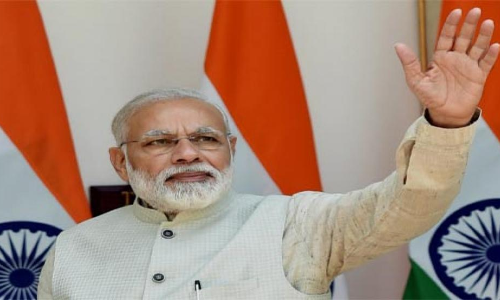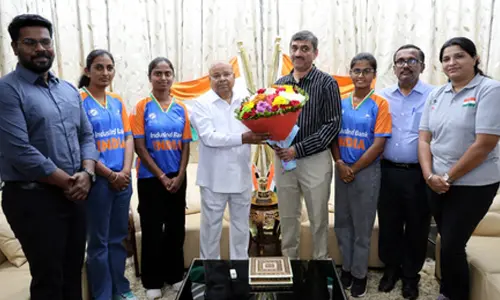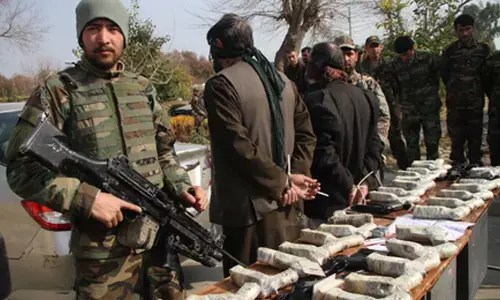Power for all by 2022: challenges & innovative solutionsyonu

Two years ago, in his Independence Day speech, Prime Minister Narendra Modi, promised to provide electricity to the 18,500 villages, which did not have electricity then, in 1,000 days. This Independence Day he highlighted that more than 14,000 have been electrified since then.
Two years ago, in his Independence Day speech, Prime Minister Narendra Modi, promised to provide electricity to the 18,500 villages, which did not have electricity then, in 1,000 days. This Independence Day he highlighted that more than 14,000 have been electrified since then.
While 99.5 per cent of our villages are deemed electrified, a fifth of the country’s population still awaits an electricity connection and many more suffer due to poor power supply. Hence, the government has moved beyond village electrification to 24×7 power for all by 2022.
S The central government has set out this ambitious goal by focusing on household electrification and reliable power supply.
S As per the Ministry of Power statistics, 43 million Indian households are yet to be electrified.
India will take nearly 20 years to electrify the existing unelectrified households if it continues with the current rate of household electrification, about 2 lakh households per month.
S In order to achieve the target by 2022, we need to increase the rate of household electrification by at least four times. However, even if we manage to achieve the feat, providing 24×7 electricity will remain a problem.
S India has four crore unelectrified rural households. This is more than the total number of households in Europe’s biggest economy, Germany, and more than doubles the households in Canada and South Korea.
S The year 2022, the 75th anniversary of Indian independence, has been earmarked for achieving ‘24×7 Power for All’. Achieving this target would mean electrifying more than 7 lakh households every month!
Steady progress made by the government:
S Data from the power ministry’s GARV-2 portal suggest that the Government has electrified more than three-fourths of the remaining 18,000-plus unelectrified villages since it came to power in 2014.
S Recently, the Government has also shifted focus from village electrification, which required only 10 per cent of the households in a village to be electrified, to electrifying every household.
ACCESS Survey:
In 2015, the Council on Energy, Environment and Water in collaboration with Columbia University conducted the largest energy access survey of its kind in India, ACCESS, covering 714 villages in six major rural electrification deprived states — Uttar Pradesh, Bihar, Jharkhand, Madhya Pradesh, Odisha and West Bengal.
S The study showed that an electricity connection does not guarantee electricity access.
S Fifty per cent of the electrified rural households across these six states did not receive even 12 hours of supply in a day.
S The situation was much worse in UP, Bihar and Jharkhand, with three-quarters of electrified households receiving less than 12 hours of supply in a day.
S Similarly, during evening hours, particularly important for basic lighting needs, half of the electrified households received less than three hours of supply.
A third of electrified households in these states still rely on kerosene as their primary source of lighting.
S Reliability and voltage instability are also major challenges.
Action plan:
S Legalise existing connections: In Madhya Pradesh, Jharkhand, Uttar Pradesh, and Odisha, the higher electrification rate could partly be due to the presence of illegal connections, and legalising these would help the Government move closer to its target.
S Improve uptake of connections: By addressing cashflow hurdles, awareness barriers, and supply challenges.
High upfront cost is the major reason behind consumer disinterest in taking up an electricity connection. While BPL households already receive a free connection under the Deen Dayal Upadhyaya Gram Jyoti Yojana (DDUGJY), APL families could be given a low-cost EMI based connection. Empowering and encouraging local authorities to organise awareness campaigns and enrolment camps in habitations exhibiting limited awareness are also essential for increasing uptake of connections. Bihar is a fine example of improving consumer uptake, providing low-cost EMI-based connections to APL families, and conducting awareness campaigns.
S Improve the supply situation for electrified households: In Bihar, Jharkhand and Uttar Pradesh, more than one-third of electrified households received less than four hours of supply during the day. Also, more than one-third households experienced at least four days of voltage fluctuations in a month.
DISCOMs need to better plan for their infrastructure, factoring in near-term increase in demand, strengthening maintenance, and improving supply.
S Explore innovative business models: Managing rural customers, particularly in remote areas, is a challenge. Maintenance and operations such as reading meters, generating bills, and collecting revenues, are key concerns. To better manage their services, discoms could explore a franchisee model by collaborating with local mini-grid operators.
A potential business model involves mini-grids importing grid electricity and supplementing with their own generation during times of peak demand. This kind of tail-end generation model would ensure improved electricity supply for the household, and enable DISCOMs to collect payments from a single entity.
S Cater to people’s aspirations: This will create a willingness to pay for the service. In a favourable political atmosphere, if rural households were to be provided quality supply via prepaid metering, it could potentially nudge them to make timely payments.
S Distributed generation: It could complement centralised grid electricity to resolve both, and ensure sustained use of electricity not just for rural households, but also for the entire rural economy including farms, schools, hospitals, and small businesses. It would lead to improved consumer satisfaction, as electricity truly becomes an enabler of prosperity in rural India.
Reason behind:S A majority of above mentioned challenges pertain to the operations and performance of state electricity distribution companies.
S Challenges in infrastructure planning, deployment, as well as maintenance lead to unreliable and poor supply at the local level. Thirty per cent of the rural electrified households in the six states did not have electricity supply for 24 hours on more than four days a month. This indicates a frequent breakdown of the infrastructure as well as delays in repairing them. Only about half the electrified households in the six states had a metered connection, with the situation much worse in UP that had only 15 per cent metered connections.
S Unmetered connections with flat fees provide no incentive for households to be judicious about energy consumption, discouraging distribution companies to supply reliable power. DISCOMs in these states often struggle with limited or non-performing staff to effectively operate and maintain services in rural areas. A fourth of the metered households either received either a fixed bill or no bill at all, indicating that DISCOMs did not have the capacity to read meters and generate bills regularly. Electricity theft and payment defaults pose further challenges for the DISCOMs.
Innovative solutions:
We need innovative solutions to address the electricity access challenges posed by rural India.
S Village-level entrepreneurs could be contracted to operate and maintain the local distribution while generating bills and collecting revenues from the customers.
S Banking on community relationships, these entrepreneurs could improve compliance on payments as well as curb stealing of power.
S Recruiting and training local youth could help address maintenance issues. This will also help in creating more skilled jobs and entrepreneurs in rural areas.
S Pre-paid and smart metering systems are other ways to encourage payments. Such solutions need to be piloted and tested.
Policy decisions of the Government Ujwal DISCOM Assurance Yojana (UDAY)
S States shall take over 75 per cent of discom debt outstanding as of September 2015.
S Reduction of Aggregate Technical & Commercial (AT&C) losses to 15 per cent by 2018-19.
S Reduction in difference between average cost of supply and average revenue realized (ARR) by 2018-19.
S Increased supply of domestic coal to substitute for imported coal.
S States shall take over future losses of discoms in a phased manner.
S Banks/FIs not to advance short term debt to discoms for financing losses.
Deen Dayal Upadhyaya Gram Jyoti Yojana (DDUGJY)
S Flagship programme of power ministry to facilitate 24*7 power supply in rural area villages
S It was launched in 2015 in Patna.
S Earlier scheme for rural electrification called Rajiv Gandhi GrameenVidyutikaran Yojana (RGGVY) has been subsumed in this scheme
S Reforms in the rural areas. It focuses on feeder separation (rural households & agricultural) and strengthening of sub-transmission & distribution infrastructure.
Integrated Power Development Scheme (IPDS)
S Strengthening of sub-transmission and distribution network in urban areas.
S Metering of distribution transformers /feeders / consumers in urban areas.
S IT enablement of distribution sector and strengthening of distribution network.
Domestic Efficient LightingProgram (DELP)
S 77 crore LED bulbs to replace household and street light incandescent bulbs
National Tariff Policy, 2016
S Cross subsidy surcharge formula revised.
S Regulator will devise power supply trajectory to ensure 24X7 power supply for all consumers latest by 2021-22 or earlier.
Installed capacity in India as of 31st March 2016
S Thermal – 210 GW (185 Coal)
S Renewable – 85 GW ( 43 Hydro plus 42 others)
S Nuclear – 5780 MW
S Total – 301 GW
Break up of renewable energy
S Wind- 27 GW
S Solar- 6.7GW
S Biomass and bagasse cogeneration -4.8GW
S Small hydel- 4.3 GW
S Total- 43GW
Renewable energy target by 2022
S 100 GW solar power,
S 60 GW wind energy
S 10 GW small hydro power,
S 5 GW biomass-based power
S The target for solar is split into 40 GW Rooftop and 60 GW through Large and Medium Scale Grid Connected Solar Power Project
Progress in achieving the target:
S Data from the power ministry’s GARV-2 portal suggest that the Government has electrified more than three-fourths of the remaining 18,000-plus unelectrified villages since it came to power in 2014.
S Recently, the Government has also shifted focus from village electrification, which required only 10 per cent of the households in a village to be electrified, to electrifying every household.
S However, providing an electricity connection to every household does not guarantee electricity access. In 2015, the Council on Energy, Environment and Water (CEEW), in association with Columbia University, conducted ACCESS, the largest-of-its-kind energy access survey covering almost 8,600 rural households in the six most energy-deprived States of India.
S Survey findings from Uttar Pradesh, Bihar, Jharkhand, West Bengal, Madhya Pradesh, and Odisha highlighted that while most of the villages and more than two-thirds of the households had electricity connections, less than 40 per cent had meaningful access to electricity.
S Many rural consumers were displeased with the poor power supply and cited reliability, quality, duration, and affordability as key concerns.
Possible priorities
S Firstly, legalise existing connections. In the case of unelectrified households, providing connections is the basic step for the discom and the State.
S In Madhya Pradesh, Jharkhand, Uttar Pradesh, and Odisha, the higher electrification rate could partly be due to the presence of illegal connections, and legalising these would help the Government move closer to its target.
S Secondly, improve uptake of connections by addressing cashflow hurdles, awareness barriers, and supply challenges. High upfront cost is the major reason behind consumer disinterest in taking up an electricity connection.
S While BPL households already receive a free connection under the Deen Dayal Upadhyaya Gram Jyoti Yojana (DDUGJY), APL families could be given a low-cost EMI based connection.
S Thirdly, improve the supply situation for electrified households. In Bihar, Jharkhand and Uttar Pradesh, more than one-third of electrified households received less than four hours of supply during the day.
S Also, more than one-third households experienced at least four days of voltage fluctuations in a month. DISCOMs need to better plan for their infrastructure, factoring in near-term increase in demand, strengthening maintenance, and improving supply.
S Fourthly, explore innovative business models. Managing rural customers, particularly in remote areas, is a challenge. Maintenance and operations such as reading meters, generating bills, and collecting revenues, are key concerns.
S To better manage their services, discoms could explore a franchisee model by collaborating with local mini-grid operators. A potential business model involves mini-grids importing grid electricity and supplementing with their own generation during times of peak demand.
S Fifthly, cater to people’s aspirations. This will create a willingness to pay for the service. In a favourable political atmosphere, if rural households were to be provided quality supply via prepaid metering, it could potentially nudge them to make timely payments.
IssuesComplexity of tariff schedules
S There are separate tariffs for poultry farms, pisciculture, wetland farms (above and below a certain size), mushroom and rabbit farms, etc
S It prevents economic actors from responding sufficiently to price signals due to the high cost of processing the price information.
S Suggestion – Simplification of tariffs with, perhaps no more than 2-3 tariff categories.
S It will improve transparency and may well yield consumption and collection efficiency, along with governance benefits.
Tariffs and Cost
S Average tariff (AT) should not be less than average cost of supply (ACS) but in India-
S Average tariffs in some cases are set below the average cost of supplying electricity
S Even after adjusting ACS for Aggregate Technical and Commercial (AT&C) losses AT continues to stay below the adjusted level of ACS in most states i.e tariff are set way below the required level .
Suggestion
S Tariffs reflecting costs are a necessary condition for discoms to sustain themselves over the long-run. So average tariffs need to be raised while giving relief to poorer section of society. How?
Exploiting Progressivity to LowerTariffs for the poor
S There is, at present, no specific policy guidelines on the intra-category cross subsidisation or subsidy provisioning.
S The tariff schedule is progressive as the consumption increases, although, Avg billing rates (ABR) for all the consumption categories lies below the average cost of supply (ACS) implying that costs are not fully recovered even from high end consumers i.e state or industry subsidizing consumption of rich
S Other countries such as Bangladesh, Sri Lanka, South Korea, Vietnam and Brazil better exploit the progressivity of electricity tariffs in the domestic category
S Suggestion- make tariff schedule after welfare analysis and charge consumers progressively much more for higher consumption while simplifying tariff schedule
S Advantage- cross-subsidisation occurs within the residential consumers itself< rich and consumers with high consumption intensity within the residential sectors subsidise prices for consumers with lower consumption.
S Given their relatively inelastic price elasticity, rich consumers will continue to maintain their consumption even after price increase. The net effect is that the residential revenue collection becomes cost neutral for the discoms (loss making at present)
Challenges
S Vast number of connections to be made and large demand : 80 million households need to be connected and the remaining 250 million households connected need proper uninterrupted supply of electricity.
S Large dependence on coal (non-renewable source): To provide for the increased demand a large amount of coal is required and so large amounts of coal reserve needs to be exploited. Moreover India does not have reserves of anthracite variety coal so needs to import it for more efficient production of electricity.
S Low renewable energy setups: The current current requirement is 100GW from solar energy and 60 GW from wind energy. There are limited renewable energy setups so a high initial investment is required to set up such plants.
S High transmission & distribution losses: High T&D losses exist, which hasn't been reduced due to lack of technology upgradation and investment. These losses have to be curtailed to increase the availability of electricity.
S Non- viability of electricity boards: Most of the state electricity boards have become non-viable due to energy thefts, misuse of electricity subsidy given for agriculture use and lack of cost linked tariffs. Due to government interference the state boards are unable to increase tariffs with the increase in cost of production.
S Hence, it is important for the government to overcome the challenges otherwise 24X7 power supply to all households by 2019 will remain a distant dream.
Way forward:
S The success depends on curbing discom losses and consumer honesty.
S Distributed generation could complement centralized grid electricity to resolve both, and ensure sustained use of electricity not just for rural households, but also for the entire rural economy including farms, schools, hospitals, and small businesses.
S It would lead to improved consumer satisfaction, as electricity truly becomes an enabler of prosperity in rural India.
Conclusion:
As the government races to meet the 2022 target, it must also focus on designing robust and innovative tools to measure and monitor the progress on a multi-dimensional level, rather than just counting the number of connections. A new India should also embrace a new electricity system, built on the smart technologies and decentralized approaches offering resilience, flexibility, and above all, inclusiveness.
Expected Questions:
S The Power for all by 2022 target would require robust and innovative tools to measure and monitor the progress on a multi-dimensional level, rather than just counting the number of connections. Discuss.
SyllabusGeneral Studies 3:
S Infrastructure: Energy
S Indian Economy and issues relating to planning, mobilization of resources, growth, development and employment.














